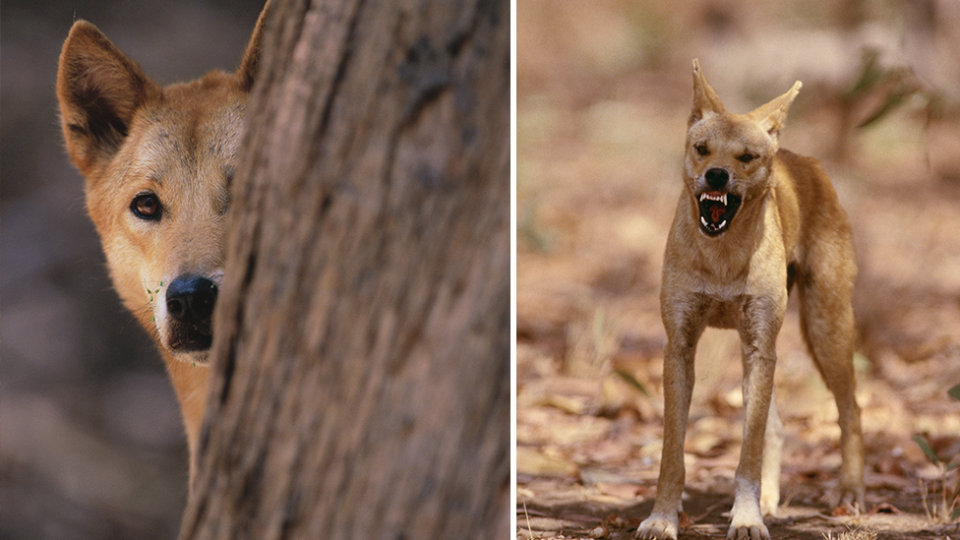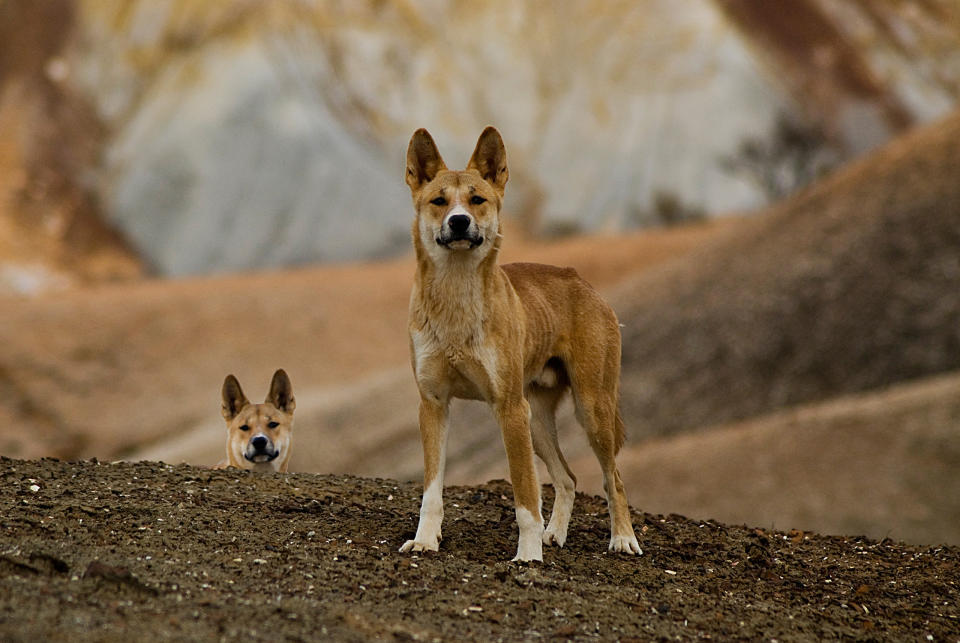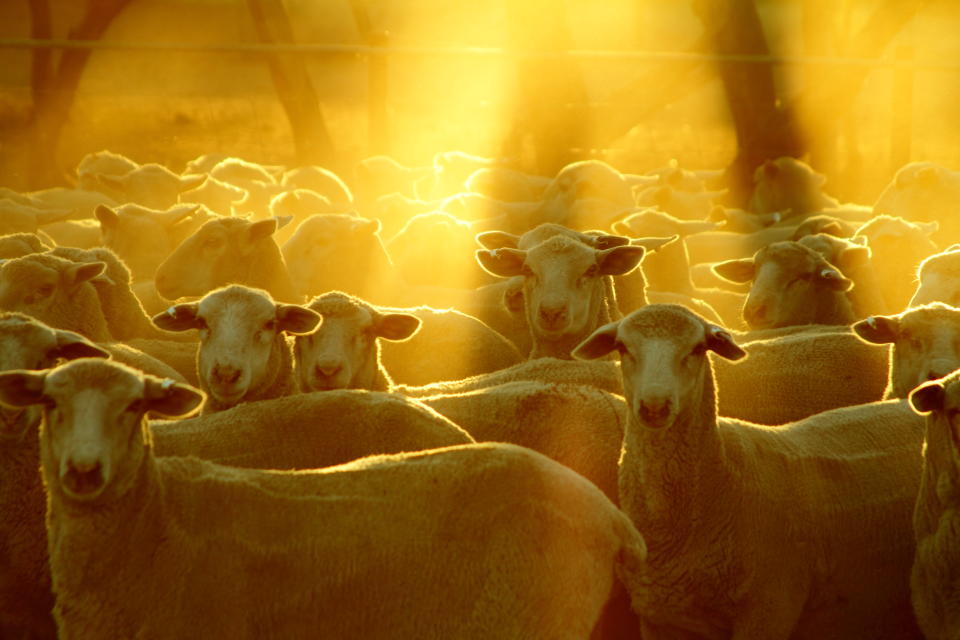'Can't sleep at night': Controversial 'deadly' fence dividing opinion on 'wild dogs'
A fence running across South Australia is being used by the government to define whether a controversial native animal is treated as a “wild dog” or a “dingo”.
Dingoes living on the north side of the Dog Fence are managed as “native animals” and those to the south are required to be “destroyed”.
A revised South Australian government plan aims to “virtually eradicate” the “wild dogs” south of the fence using baits and other control measures.
“Outside the Dog Fence, dingoes have important cultural and ecological roles and so they are managed as native animals under the National Parks and Wildlife Act 1972,” the government’s draft policy states.
“Inside the Dog Fence they are managed as wild dogs, which all land managers are required to destroy under the Natural Resources Management Act.”

The government’s planned eradication is controversial, especially when it comes to terminology.
University of NSW Research Fellow Dr Kylie Cairns has put her name to a submission protesting new enforcement measures and argues that use of the term “wild dog” is misleading.
“They are inappropriately using the term wild dog when referring to dingoes,” she told Yahoo News Australia.
“Generally that’s done because people are more supportive of lethally controlling wild dogs because they think that they’re just feral domestic dogs.
“If (the government) were clear and transparent and said that they were dingoes, they’d find people would be less supportive of the controls.

The government did not respond to questions from Yahoo News Australia about their use of language used to describe dingoes as wild dogs.
‘No feral dogs found’ in South Australia
Anecdotally, graziers say dingoes are becoming heavier, losing their purity, and having more than one litter a year.
The government echoes their concerns, and argues their eradication measures are helping to prevent hybridisation of the species.
Dr Cairns disagrees, and points to research conducted in 2015 which she says formed her conclusion there are few if any feral dogs with a dingo purity below 75 per cent in South Australia.
“There is deep misunderstanding about the DNA test results of dingoes across Australia, people think there are few or no pure ones left and that is simply not accurate,” she said.
“DNA testing in South Australia has found that 82 per cent of the animals are classified as pure dingoes and the remaining 18 per cent were greater than 75 per cent dingoes.
“They found no feral domestic dogs.”

Dr Cairns says she is particularly concerned about any baiting around the Ngarkat Conservation Park which contains dingoes she believes may be a “unique and distinct” population.
The data is yet to be published, but early indications suggest the animals in this region have a distinct lineage and look quite different to other populations.
“It’s not appropriate to exterminate a native species in its range,” she said.
“The dingoes in the area are very low density and there have not been adequate surveys to determine numbers.”
‘You can’t sleep at night’: Farmers impacted by dingoes
Dingoes are a controversial species in Australia, with control programs existing across states including NSW, Victoria and Queensland.
The Dog Fence was initially built in the 1880s to keep dingoes and other “pest species” outside of the largely fertile southeast of the state.
It runs longer than 5,600 kilometres, starting in the Darling Downs in South Australia and ending in southern Queensland where it is called the Great Barrier Fence.
Many farmers credit the fence with allowing them to successfully raise stock, because according to South Australian grazier Geoff Power “dogs and sheep just don’t mix”.

Mr Power chairs the South Australian Dog Fence Board and the National Wild Dog Action Plan coordination committee and has seen first-hand the impact that wild dogs can have on sheep.
“The mental stress of that is incredible, you can’t sleep at night, it’s not good for your wellbeing,” he told Yahoo News Australia.
“It would have been thousands of sheep predated recently – one guy put 1,950 sheep onto a property and I think he crutched 150 six months later.
“There’s another guy I know, and he’s just south of me actually, a dog got into his sheep and he lost three or four hundred over a very short period of time. You can lose 30 to 40 a night easily.
Mr Power believes that without baiting, wildlife would be devastated by dingoes and the wool industry would be driven out, causing further suffering in regional towns.
“If you want a sheep industry in the the north of the state, we need to have means to be able to eradicate them,” he said.
“There’s an economic impact from the point of view of regional areas where we used to have sheep and we haven’t got them any more.
“You have five, or six, or seven, or eight shearing teams working out of an area, now that the sheep are gone, they’re not there any more.
“That has a huge impact on main streets in towns in regional areas because the shearing teams are no longer spending money and you haven’t got the transport companies trucking stock or wool.”
Government says baits needed to stop ‘increased’ dog attacks
The South Australian government has long championed dingo control programs south of the fence, using leg traps laced with strychnine, shooting and baiting, but now a revised policy will force landholders to follow “minimum baiting standards” using 1080 poison.
Under proposed amendments to the dingo management plan, all property owners within the pastoral area including those who don’t have a wild dog issue, will be required to bait. Poisoning must also occur on organic farms and national parks.
The government says the numbers of wild dogs are increasing on the south side of the fence, with acting agriculture minister Dan van Holst Pellekaan describing the wild dog population as having “increased dramatically”.

They state farmers have reported losing more than 10,000 sheep in 2018 to wild dogs and agriculture minister Tim Whetstone told AAP that wild dogs impact on pastoral regions costing livestock producers almost $90 million a year.
“Stopping the southward spread of wild dogs is also the best way to protect pure dingo populations by preventing mixing and hybridisation with feral dogs.” he said.
“This is why our government is ramping up efforts to eradicate wild dogs south of the Dog Fence by employing extra wild dog trappers, laying extra baits, offering a wild dog bounty and undertaking the once-in-a-century $25 million rebuilding of the Dog Fence.”
Requests for data to support government assertions that dog numbers or attacks on stock are increasing were sent to both the Department of Premier and Cabinet and Primary Industries and Regions South Australia (PIRSA) on Thursday evening, but as of the time of writing the figures had not been provided.
A spokesperson instead directed the line of questioning to the government portal which contained submissions from graziers outlining stock losses attributed to dingoes.
Concern for ‘unique and distinct population’
The public response to the proposal has been mixed, and responses appear largely split along the lines of farming and conservation.
Graziers have highlighted the impact of stock losses and the grief they experience when tending to stock that has been attacked by dingoes.
“Too often I’ve seen wounded sheep laying on their sides dying a slow death due to dog attacks. Just like any pest it needs to be controlled, just like any weed in a garden it needs to be managed before taking over the whole yard,” wrote one farmer.
“Just at present we are finding up to five sheep a night that are being torn to pieces and killed by wild dogs or dingoes - a very distressing sight,” said another landholder.

In response to the proposed amendments, 37 scientists have put their names to a submission, raising what they call “serious concerns” about PIRSA’s draft plan.
The signatories have called on the government to consult with experts in ecology, biodiversity and wildlife-conflict in order to develop evidence based guidelines.
“There is mounting and compelling evidence that indiscriminate baiting exacerbates livestock predation by fragmenting and destabilising dingo family groups such that remaining members intensify attacks on livestock,” it says.
“Baiting rarely, if ever removes all dingoes.
“The negative ecological consequences of lethal control of dingoes could seriously harm the biodiversity, resilience and health of SA’s ecosystems.”
‘Extremely concerning’: controversy around use of 1080 poison
At the centre of the government’s policy is use of the controversial poison 1080, which is used widely in Australia and New Zealand, but banned in several other countries.
As well as being used to protect stock, baiting programs are key to a number of environmental programs across the country that seek to limit feral animal number that impact on wildlife.
'$20 per scalp': Dingo bounty flyer sparks concern over animal's future
The battle to save Australia's dying koalas continues amid coronavirus crisis
Backflip on decision to slaughter 200 wombats after international outcry
How Chinese farmers could prevent the next pandemic, experts reveal
As the poison is naturally occurring in plants across some parts of Australia, it is favoured by rangers working in animal eradication, arguing it has limited effect on most wildlife.
While many graziers insist arial baiting of 1080 is crucial to farm across large sheep properties, many environmentalists have a different view, highlighting the effectiveness of non-lethal controls like fox lights and shepherd animals.

Humane Society International’s head of programs Evan Quartermain said South Australia’s use of the poison across large areas of the state was “extremely concerning”.
“It’s supposedly to reduce the impacts of ‘wild dogs’ on farmers, but this unsophisticated approach could well do producers more harm than good,” he said.
“And what’s worse is that dingoes, our incredibly ecologically important native predators, are the target. The actions of the South Australian government will cause hundreds of them to face agonising deaths through inhumane poisoning.”
“There are also serious worries surrounding the impacts on non-target wildlife like goannas and birds of prey, which aren’t quite as sensitive to 1080 poison as dingoes but suffer significantly through repeat ingestion. That our wildlife isn’t safe from 1080 baits even in National Parks is a disgrace.”
“We know the terrible welfare outcomes that result from these poison baits people are being ordered to distribute, and we know we can do better. Sadly South Australia is shirking the opportunity to rise to that challenge.”
Time up for public consultations
Public consultation for the management of wild dogs has now closed and the outcome is expected to be published in May this year.
While the South Australian government did not respond to specific questions from Yahoo News Australia about the program, it did provide a link to its website and draft plan, and highlighted the following statement.
“The development of this draft revised wild dog policy and associated baiting control programs, was led by the Department of Primary Industries and Regions SA (PIRSA) in consultation with the South Australian Wild Dog Advisory Group, the Department for Environment and Water, Natural Resource Management boards and other industry and community stakeholders.
“Each of these organisations and Boards have Aboriginal members who provided advice on the draft revised policy prior to public consultation.”
Do you have a story tip? Email: newsroomau@yahoonews.com.
You can also follow us on Facebook, Instagram and Twitter and download the Yahoo News app from the App Store or Google Play.

